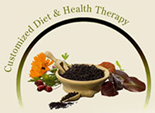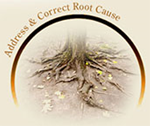





Gross Ingredients Might Be Hiding in Your Foods
Human body is designed to have, digest and assimilate real wholesome food which nowadays becomes a bit challenging and difficult to find while industrialized and artificial food is plenty. However, this ‘food’ is full of harmful substances that alter body chemistry leaving it prone to all kind of illnesses or diseases. I came across this interesting article and found it noteworthy to share it with you. So, if you don’t make your meal yourself and from scratch, you can’t know exactly what is hiding in your pre-made food.
“That’s because companies are allowed to use misleading names for food additives – or can omit listing the ingredients altogether, labeling them simply “natural flavors.” Sure, you’ve probably heard about pink slime in burgers, but has anyone mentioned the beetles and beaver anal glands in your smoothie?
Here’s just a few of these unpleasant and, frankly, disgusting secret ingredients you’re probably eating on a regular basis, courtesy of Business Insider:
- Cochineal beetles – These beetles are crushed up to make a red dye that’s used in everything from yogurt, maraschino cherries, commercial jams and jellies, tomato products, and Starbucks Frappuccinos. I don’t know about you, but I don’t completely understand why pink or red fruit isn’t colorful enough on its own.
- L-Cysteine – This is an amino acid used to softened the dough of mass-produced bread. Where does it come from? Human hair. Sometimes duck feathers. About 80% of the L-cysteine on the market comes from human hair (although McDonald’s uses the duck-based variety for its baked goods). Is this technically cannibalism, or just gross?
- Castoreum – Jaime Oliver initially drew attention to the use of this “flavor enhancer” in cheap vanilla and strawberry ice cream. It’s a mixture of the anal secretions and urine of beavers – a natural byproduct of the beaver pelt industry, used as a natural flavoring agent and a fragrance in cosmetics. The good news (as such) is that the FDA recognizes castoreum as “safe.” I guess there’s that.
- Isinglass – That’s a fancy way of saying “dried fish bladder.” It’s used to give beers that distinctive golden glow by binding with the yeast and forming a sediment at the bottom of the cask, which is then (mostly) removed from the final product. There’s no actual need to use it, because the yeast will separate out from the beer on its own within a few days, but mixing in liquefied swim bladder is quicker. Yummy.
- Gelatin – Is it really news that gelatin is made from boiled animal connective tissue? Well, in case you weren’t aware, Jello is definitely, definitely not vegetarian. There are vegetable-based gelatins on the market if you find the idea of boiled bone or skin powder a little too nauseating.
- Lanolin – This is a natural oil found in sheep’s wool and it’s normally used for lotions, shampoos, sunscreen, and other cosmetics to leave your skin and hair silky and smooth. It doesn’t actually hurt the sheep, which is being sheared for the wool anyway, as long as you don’t mind smearing yourself with lamb-grease. But even if you were aware of its use in cosmetics, you probably didn’t know that it’s also used to soften chewing gum.
- Sawdust – That bag of shredded cheese you were going to sprinkle on your pasta? It probably uses “cellulose” to prevent clumping. That’s another way of saying your cheese is coated in a fine layer of powdered wood pulp. It’s also used in meat products, ice cream, and more. At least it’s one way to get your daily intake of fiber.
- Sodium bisulfite – A chemical used as a toilet bowl cleaner, it’s also used to bleach discoloration from potato chips and extend their shelf life. Somehow, this isn’t particularly reassuring.
- And much, much more. There’s so many weird chemical and animal-derived ingredients in processed food that I can’t possibly cover them all in just one blog post. For example, Wendy’s chili gets its distinctive texture from a helping of added sand. And did you know that commercial orange juice isn’t actually flavored with real oranges?
These ingredients would make anyone queasy – but many of them are bad news for anyone trying to follow a vegan or vegetarian diet. And if you suffer from food allergies? Well, if they’re not awful, maybe sometimes you can take a chance on a product listing “natural flavors.” And if they’re deadly, then I guess you’re stuck erring on the side of caution and only eating foods you can prepare yourself.
Actually, even if you don’t have any special dietary needs, that’s probably a good idea. Your standards for the amount of bugs in your meal are probably a lot higher than the FDA’s. Do Care2 readers know of any other disgusting food additives that should be added to the list?”
Adapted From: http://www.care2.com/causes/what-gross-secret-ingredients-are-hiding-in-your-food.html



Leave a Reply